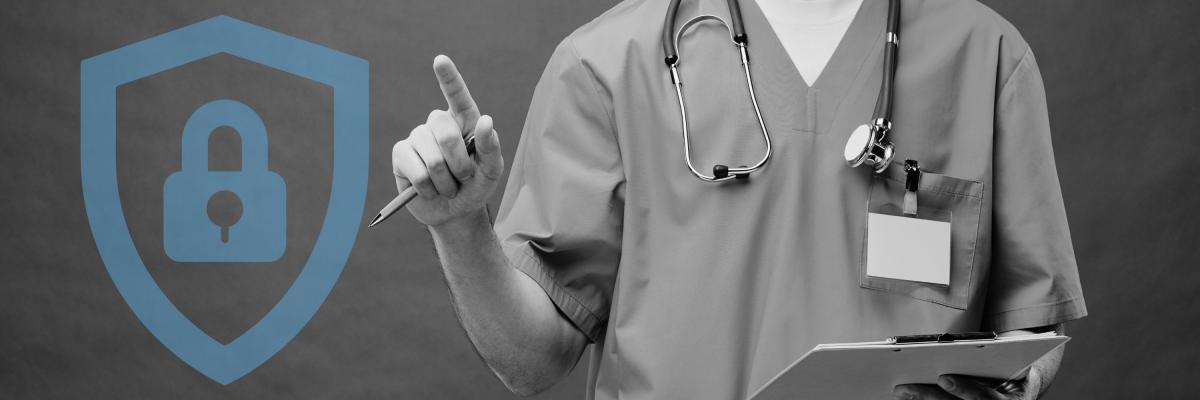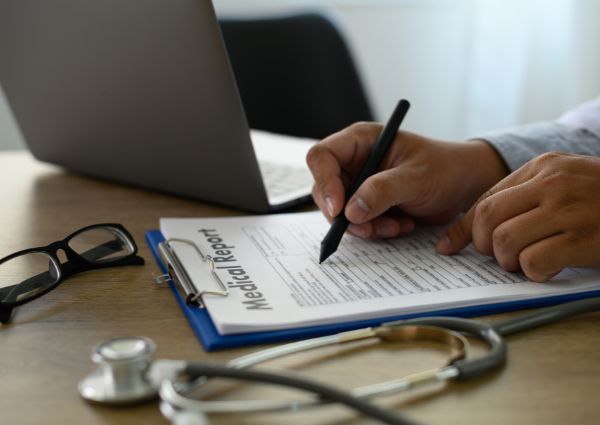
In healthcare facilities where every second counts, printers play a crucial role in saving lives. These unassuming devices provide prescriptions, medical records, and essential reports.
Yet, like our own health, it's essential to ensure the security of these machines. They must be strong enough to withstand potential cyberattacks.
Welcome to our article on printer security in healthcare. With over 40 years of experience in printer expertise, Strategic Technology Partners of Texas (STPT) is here to help you with printer security.
This article will explore why printers are a significant risk to healthcare institutions. It will offer solutions and highlight the reasons for investing in printer security.
Why Printers Pose a Risk in Healthcare
You might already know this, but modern printers are essentially computers. They have processors, memory, storage, and internet connectivity. These allow them to perform various functions beyond printing, faxing, and scanning.
In the average hospital, printers produce patient records, prescriptions, and administrative documents. Yet, printers’ increasing connection to the internet poses a significant security risk. Here's why:
-
Data Breach Potential
According to the HIPPA Journal, healthcare data breaches peaked in 2023. There was a massive 156% increase from the previous year.
Printers often store sensitive patient information, such as medical records and insurance details. But, without adequate protection, this data is ripe for exploitation by malicious actors.
In 2023, a Texas-based software company breached the medical records of 2.7 million people.
An unsecured printer is an easy entry point for hackers and malicious third parties.
-
Network Vulnerabilities
Many healthcare organizations use interconnected networks to access printers from various devices. While convenient, this interconnectedness can also serve as a gateway for cyberattacks. Most breaches of protected health information (PHI) occur on network servers.
Hackers can exploit weaknesses in one device to infiltrate the entire network. This compromises patient privacy and disrupts critical healthcare operations.
-
HIPPA Compliance Concerns
Healthcare institutions must legally adhere to strict regulations like HIPAA (Health Insurance Portability and Accountability Act) to protect patient data. Not following these regulations can lead to severe legal consequences. Not to mention damage to the institution's reputation and loss of patient trust.
In Washington, security guards from a community hospital accessed 419 medical files. This highlights the physical and digital risk posed by staff members who might use a printer as a port of entry.
Measures for Printer Security
What best practices should you follow to improve printing security in healthcare? There are several measures to keep confidential patient information safe from prying eyes. Here’s how to address the inherent risks of printers:
Keep Firmware Up to Date
Make sure to update your printer's firmware regularly to protect against cyberattacks. Firmware is the language machines need to communicate and perform functions. This will give you the latest security and productivity features. Plus, you'll get bug fixes and ensure compatibility with new operating systems.
However, older printers are less likely to receive updates after 5-10 years, so they may not support the latest features or security enhancements.
For a more in-depth explanation of firmware’s role in printer security, check out our blog on why you should update your printer’s firmware.
Encryption and Authentication:
Implement encryption protocols and user authentication. These measures add layers of security to printer networks.
Encrypting data and requiring user authentication ensures that only authorized healthcare employees can view sensitive patient information.
Monitor Network:
Healthcare printers should have a private IP and remain behind a network firewall.
Consult your IT team to help place your printers behind a security system. This way, you can better defend your network from intruders and hackers.
Monitoring network access to printers mitigates cyber risks and secures patient data.
Physically secure your printers:
Ensure they stay in a secure area where only authorized employees can access them. Also, watch the healthcare staff's activity in and around the printer.
- Avoid leaving unsecured documents in the paper tray. Outsiders with unknown intentions could exploit this vulnerability.
- Regularly wipe and encrypt your printer's hard drive. This prevents unwanted access to sensitive data stored within.
Employee Training and Patient Awareness:
Human error remains one of the leading causes of security breaches and HIPPA violations. Healthcare workers must know a printer's role in complying with HIPAA and safeguarding PHI.
Develop comprehensive training programs to educate healthcare staff on printer security. These programs should cover things like phishing awareness and best practices for handling data.
Empowering employees to identify and respond to security threats creates a vigilant culture against cyberattacks.
Invest in Managed Print Services
Consider implementing a managed print service (MPS) for your hospital’s printers. Such services offer many benefits, letting you do the following:
- Access 24/7 proactive device monitoring. This identifies malfunctions and security irregularities in real-time.
- Stay notified of the latest firmware updates.
- Eliminate older or non-networked printers. MPS providers typically conduct thorough evaluations before starting a managed print contract.
- Reduce external access to your printers, minimizing the risk of document theft.
Also, print management software like Y-Soft and Paper Cut offer enhanced security options.
If you want to know whether MPS is suitable for your healthcare facility, read our blog explaining the pros and cons of MPS.
Healthcare practices should conduct regular, thorough risk analyses. They should also optimize communication with staff and respond quickly to any data breach reports.
Why Healthcare Institutions Should Invest in Printer Security
Securing printers in healthcare institutions is vital. It's like investing in our immune system to fend off illnesses. Medical practices can enhance their longevity and build trust by upgrading their cybersecurity and safeguarding patient data. Although costly, it’s a worthy investment because the benefits outweigh the costs.
Here are only some benefits of adequately implementing printing security practices:
- Protect Patient Privacy: Every printed document represents a potential breach point for patient privacy. Healthcare organizations can protect confidential information by investing in robust printer security measures.
- Mitigate Legal and Financial Risks: The repercussions of a data breach extend far beyond financial losses. Non-compliance with data protection regulations can result in hefty fines, legal penalties, and irreparable damage to reputation. Printer security investment can reduce these risks and help uphold patient confidentiality.
- Ensure Productivity: A cyberattack or data breach can slow down operations and endanger patient care. By improving printer security, healthcare facilities can reduce the risk of disruptions. They can also ensure continued access to critical patient records and administrative documents.
Prioritizing printer security preserves the life of healthcare systems, benefiting everyone involved.
Printer security is necessary in a healthcare landscape filled with security threats. Boosting your defenses against cyber threats ensures a safer healthcare environment for all.
Consider Digital Solutions Tailored for Health
Investing in a healthcare multifunction printer solution can offer several benefits.
For example, the Kno2 Connected Healthcare Multifunction Printer (MFP) Solution, in partnership with Xerox, provides a comprehensive platform.
This solution combines printing, copying, scanning, and faxing functions with direct secure messaging (DSM). It helps ensure HIPAA compliance and streamlines patient information sharing.
Contact our business consultants today if you want to upgrade your copier to the Kno2 Healthcare Connected MFP. They can help you learn more about how this solution can benefit your organization.

